Traditional Welsh Cakes
This post may contain affiliate links. See my disclosure policy.
Unforgettably flaky, tender, almost melt-in-your-mouth texture that’s punctuated with sweet currants and laced with a wonderful hint of mace, these Welsh cakes are simply irresistible! A thoroughly authentic Welsh Cakes recipe from generations past.
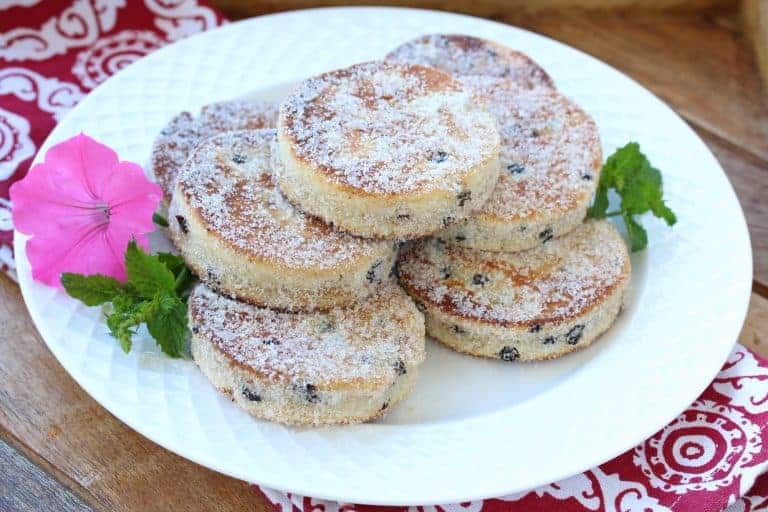
What Are Welsh Cakes?
Welsh cakes, also known as bakestones or “picau ar y maen” in the Welsh language, are popular, traditional Welsh baked goods that are flat, round, and resemble griddle scones. They are traditionally made from flour, lard, sugar, and dried currants and often a hint of warming spices like cinnamon and mace. They’re cooked on a griddle or heavy skillet which gives them their characteristic slightly crispy exterior while keeping the interior soft and meltingly tender. Once cooked they’re coated in sugar and served warm. An important and beloved part of Welsh culinary heritage, Welsh cakes are enjoyed as an everyday treat or served on special occasions like St. David’s Day.
A Brief Introduction to Wales
Before we get to the recipe, let’s talk just briefly about the beautiful country that is home to these delicious Welsh Cakes. Wales is a breathtakingly scenic country with mountainous national parks, glacial landforms, rugged coastlines, some of the most striking fortresses in the world, picturesque villages, and steeped in a rich Celtic culture.
And then of course there is the Welsh language which is near maddening to anyone who can’t speak it (99.999% of the world). Yet even the mind-boggling, tongue-twisting language is an endearing aspect of this beautiful country.

I visited Wales regularly during the 6 years I lived in England and my husband also lived in Wales for nearly a year as a young adult. There’s a small village in Wales that has the longest place name in the UK and second longest in the world. Todd prides himself in being able to say the name, all 58 letters, at break-neck speed and without even the slightest hiccup: Llanfairpwllgwyngyllgogerychwyrndrobwllllantysiliogogogoch.
And just in case you don’t believe me, we visited the village this Summer and I took a picture of the sign:
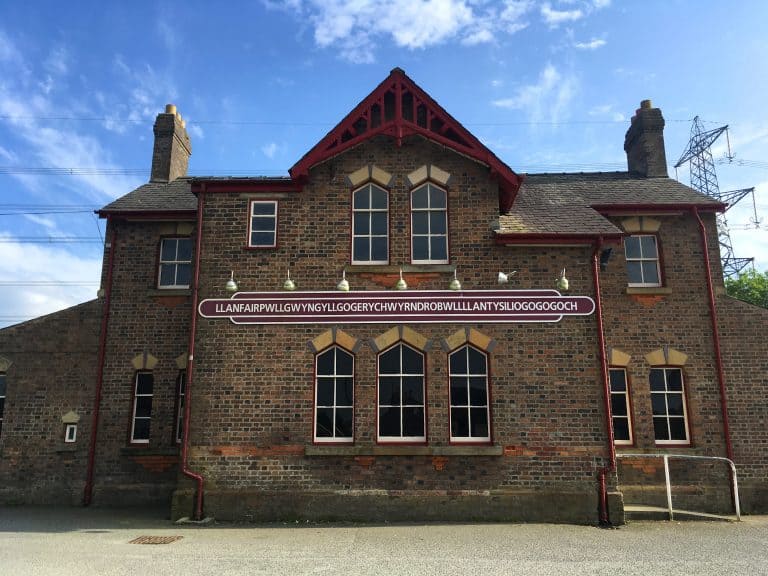
So you have these charming quirks in Wales and then you also have the jaw-dropping, awe-inspiring landscapes and architecture. Todd and I both absolutely love Wales and just got back from a recent vacation there with our kids, focusing this time on North Wales. Here are just few representative pictures of the area.
Below left: The Great Orme. Below right (top and bottom): Snowdonia National Park.

Below are a few of Wales’ most striking and famous castles, all built by Edward I in the 13th century.
Below top left: Caernarfon Castle, where historically the Prince of Wales was crowned and that tradition was resumed with Prince Charles. Below top right: View from Harlech Castle.
Below bottom left: Beaumaris Castle, considered the finest textbook example concentric castle design in the world. Below bottom right: Harlech Castle, also considered an example of the finest medieval castle designs in the world.
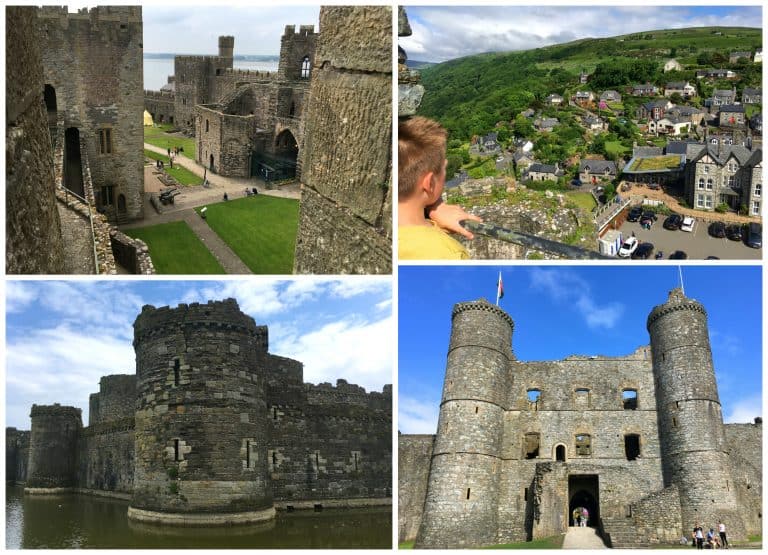
Below: Conwy Castle, considered one of the finest defensive castle designs in the world.
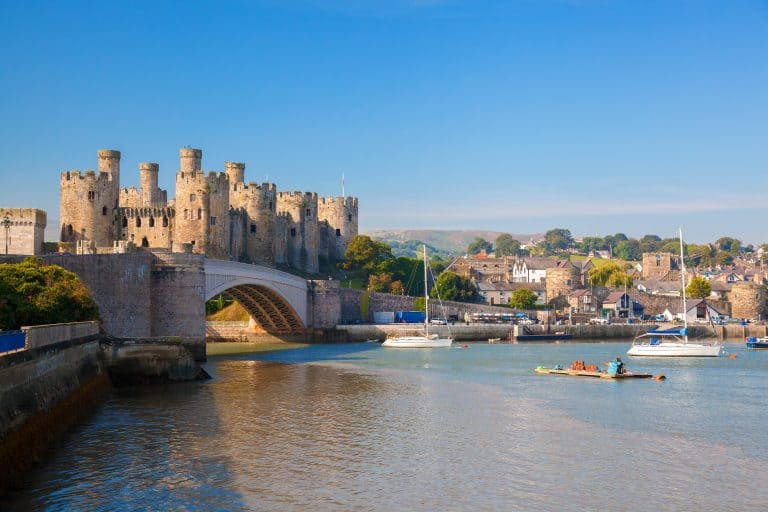
The Killebrew’s at Beaumaris Castle.
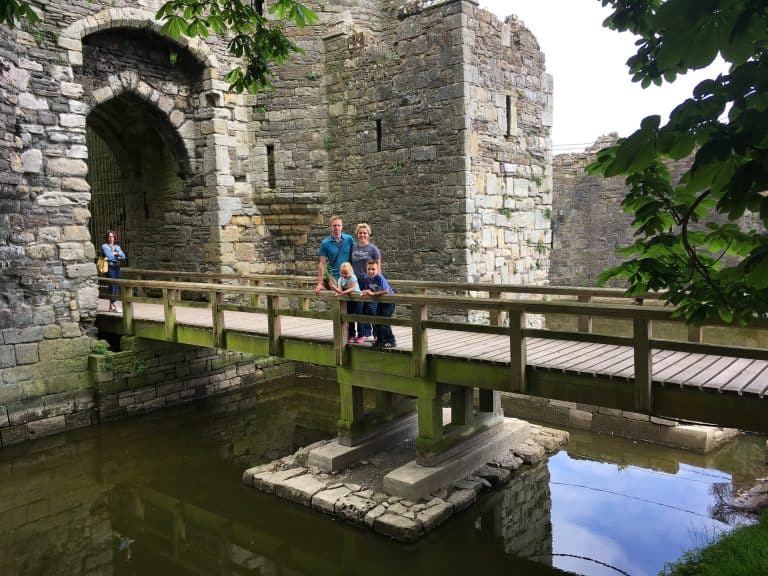
Wales also has a special place in my heart because it’s home to many of my ancestors. My great grandparents on my father’s maternal side were from South Wales and I also have a long line Welsh ancestry in North Wales that goes back to Roman times.
It was my great-grandparents, the Thomas Family from Glamorganshire, Wales, who immigrated to the United States, to Utah, in the late 19th century.

I’ve always wished some of my great grandmothers would have left some journals or recipes to pass down. What a treasure that would be! Nevertheless, I like to imagine my Welsh great-grandmother, Dinah, making these Welsh cakes in her kitchen and her children enjoying them hot off the griddle and dusted in sugar.
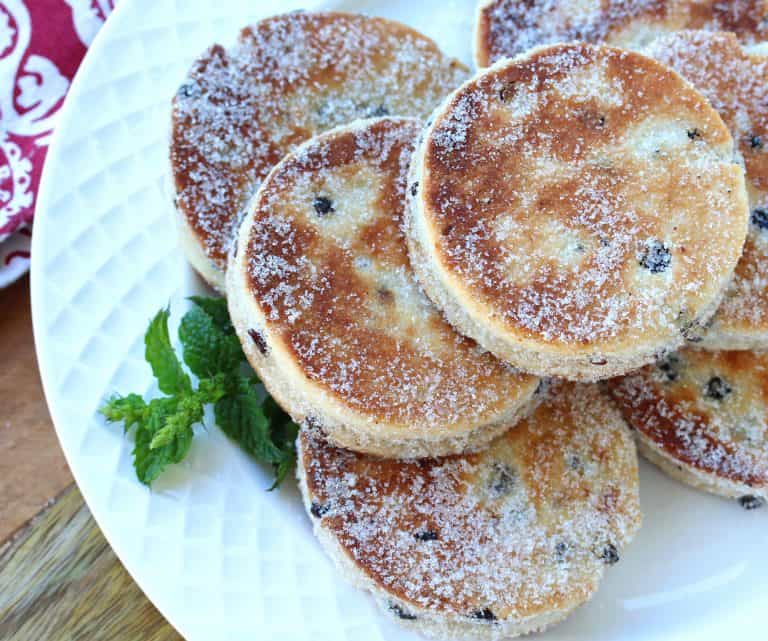
So in honor of the beautiful country of Wales and my Welsh heritage, I’m sharing a very authentic recipe for traditional Welsh Cakes. In Wales these are also known as “bakestones” because traditionally they were cooked on a bakestone which is a cast iron griddle that was placed on the fire or stovetop.
If you’ve never had Welsh Cakes before, I think you’ll agree once you try them that they’re quite different from anything you’ve had before. With their unforgettably flaky, tender, almost melt-in-your-mouth texture that’s punctuated with sweet currants and laced with a wonderful hint of mace, Welsh cakes are simply irresistible.
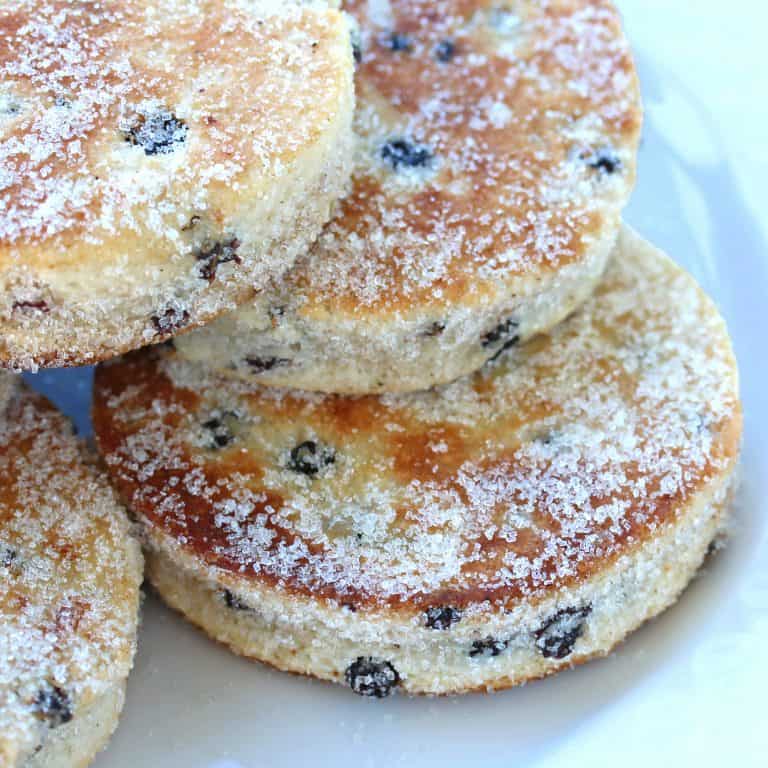
And if you have had Welsh cakes before but your opinion (whether or good or bad) is based solely on store-bought ones, set that opinion aside because I promise you you’ll form a whole new opinion once you’ve tried homemade ones. I’ve had store-bought Welsh cakes on a couple of occasions and I don’t care for them.
But…HOMEMADE…that’s an entirely different story. I am IN LOVE with these traditional homemade Welsh cakes!! Let me say it again: NOTHING compares to the traditional homemade version of these cakes using real lard and mace! They are FABULOUS. Just trust me on this enough to give them a try.
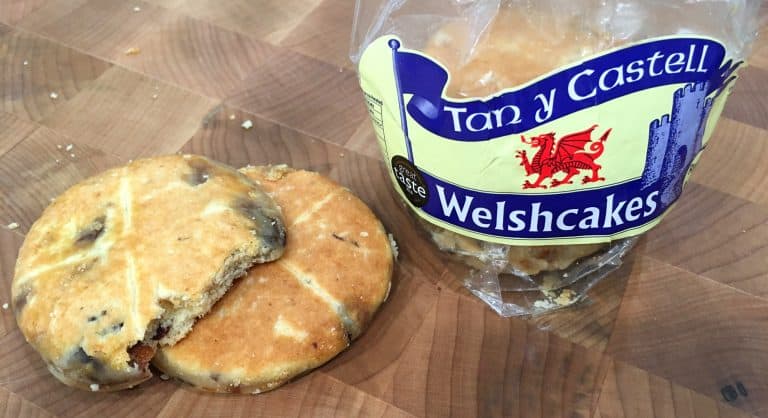
How to Make Welsh Cakes
Use lard. Do not substitute with additional butter. Lard makes ALL the difference in the texture. I repeat: Lard makes ALL the difference in the texture. I highly recommend making your own lard – it’s super easy! Learn How to Make Lard.
Use dried currants. In spite of their name, they’re actually not dried currants at all but rather a variety of raisin known as zante raisins. They’re much smaller than regular raisins, not as cloyingly sweet, and are firmer in texture (regular raisins will be too large and too mushy in these). Dried currants are a staple in traditional British baking and a must for making Welsh cakes.
Use mace. Don’t substitute nutmeg. Mace is a wonderfully aromatic and flavorful spice that was commonly used generations ago but is unfortunately less common today. Its really adds a special and nostalgic touch of old-fashioned flavor.
Use caster sugar. This is also critical for the texture. Since these Welsh cakes are cooked pretty quickly, regular granulated sugar will not have time to dissolve and the texture will be grittier as opposed to that smooth, almost melt-in-your mouth consistency we’re after. Caster sugar is ultra-fine sugar and dissolves very quickly. You can buy caster sugar or very simply make your own by running regular sugar through the blender until very fine. Do NOT use powdered sugar – it contains cornstarch and is not the same thing.
Traditional Welsh Cakes Recipe
Let’s get started!
In a bowl combine the flour, sugar, baking powder, salt, mace and cinnamon. Mix in the lard and butter using your fingers or a food processor until the mixture resembles coarse crumbs.
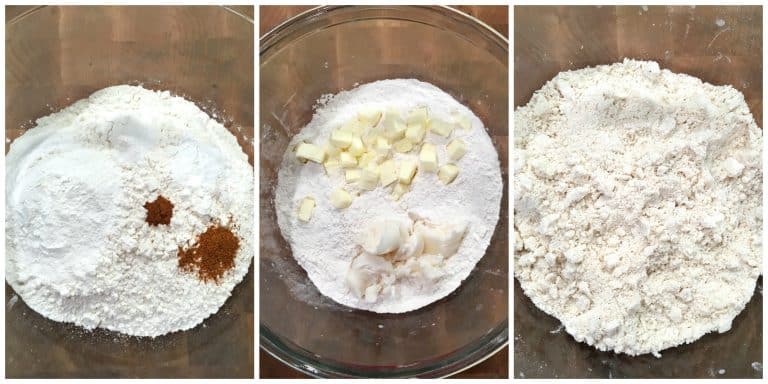
Add the currants and stir to combine. Add the beaten egg and work it into the mixture adding a little milk as needed until you have a soft dough. It should not be wet or sticky.
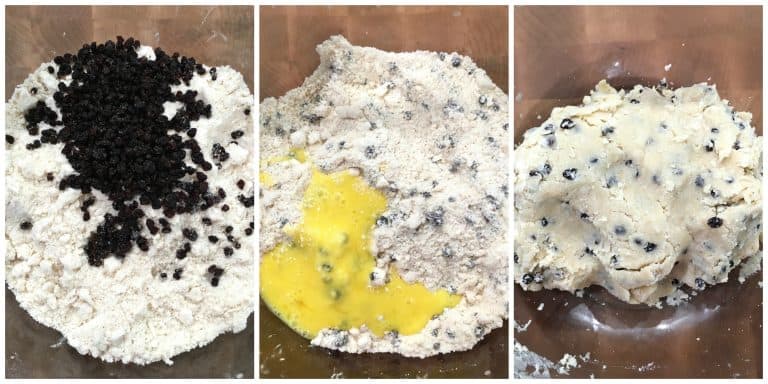
Wrap the dough and refrigerate for 30 minutes. (Dough can be made well in advance and chilled until ready to use.)
Roll the dough out onto a floured or non-stick surface about 1/4 inch thick. Cut out rounds using a biscuit cutter.
Gather up the scraps, knead together and roll out again to cut the remaining rounds.
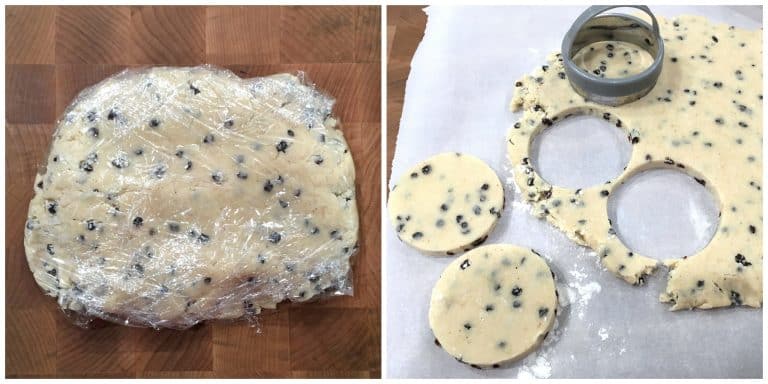
Heat and lightly butter a cast iron pan over medium heat. (I use and love my Lodge cast iron pan for these Welsh Cakes.)
Add the cakes and cook on each side until lightly browned, about 3-4 minutes (lower the heat if needed to prevent the outside from burning before the interior is done).

Once the Welsh cakes are done, remove them from the pan and let them cool for a minute.
While the Welsh cakes are still warm, place them in a small bowl of sugar to coat all sides.

Best eaten while a little warm. Reheat Welsh Cakes in a pan, toaster, or warmed oven (or if in a hurry, in the microwave for a few seconds).
Enjoy!
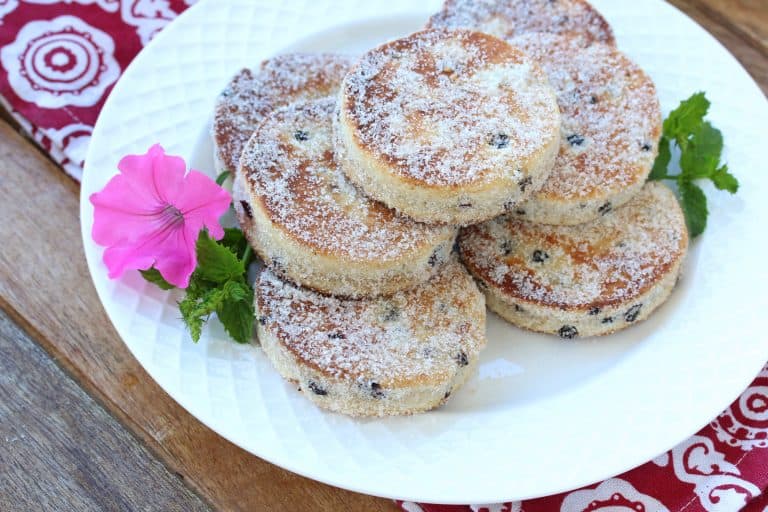
For more traditional Welsh and British bakes be sure to try my:
- Bara Brith
- Treacle Tart
- Sticky Toffee Pudding
- Spotted Dick
- Rock Cakes
- Chelsea Buns
- Cornish Fairings
- Victoria Sponge Cake
- Hot Cross Buns
- Mince Pies
- Lardy Cake
- Scottish Shortbread
- Flapjacks
- Parkin
- Eccles Cakes
- Crumpets
Save This Recipe
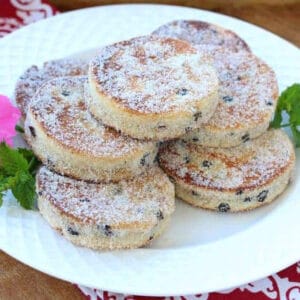
Traditional Welsh Cakes
Ingredients
- 2 cups all-purpose flour
- 1/3 cup caster sugar (do not substitute) (to make your own, pulse granulated sugar in a blender until ultra fine. Do NOT use powdered sugar)
- 1 teaspoon baking powder
- 1/2 teaspoon ground mace ,(a highly fragrant, flavorful spice used in a lot of traditional baking. STRONGLY recommended but can substitute nutmeg if necessary)
- 1/4 teaspoon salt
- 1/8 teaspoon ground cinnamon
- 2 ounces lard , chilled (about 4 tablespoons) NOTE: Lard is critical for the wonderful texture of Welsh Cakes
- How To Render Your Own Lard! (it’s WAY cheaper and better)
- 2 ounces butter , chilled and cubed
- 1 large egg , lightly beaten
- 1/2 cup dried currants
- 2-3 tablespoons milk
- granulated sugar for finished cakes
Instructions
- In a bowl combine the flour, sugar, baking powder, salt, mace and cinnamon. Mix in the lard and butter using your fingers or a food processor until the mixture resembles coarse crumbs. Add the currants and stir to combine. Add the beaten egg and work it into the mixture adding a little milk as needed until you have a soft dough. It should not be wet or sticky. Wrap the dough and refrigerate for 30 minutes. (Dough can be made well in advance and chilled until ready to use.)
- Roll the dough out onto a floured or non-stick surface about 1/4 inch thick. Cut out rounds using a biscuit cutter. Gather up the scraps, knead together and roll out again to cut the remaining rounds.
- Heat and lightly butter a cast iron pan over medium heat (I lightly butter it to later help the sugar adhere to the cakes when they’re sprinkled). Add the cakes and cook on each side until lightly browned, about 3-4 minutes (lower the heat if needed to prevent the outside from burning before the interior is done).
- Let them cool for about a minute. While the Welsh cakes are still warm, place them in a small bowl of sugar to coat all sides. Best eaten while a little warm. Reheat Welsh Cakes in a pan, toaster, or warmed oven (or if in a hurry, in the microwave for a few seconds).
Nutrition
Originally published on The Daring Gourmet October 30, 2018



















Absolutely delicious! Great recipe and will make again :) thank you for sharing!
Thank you so much, Tammy!
My husband and I are both Welsh and growing up I. The Brecon Beacons we were brought up on Welsh Cakes made by many an aunty, grandma or mam!
This recipe makes the Welsh cakes just like we remember them. Delicious.
Thanks for the recipe and a taste of home!
Thank you so much for that feedback, Max, I’m so glad you enjoyed these! Brecon Beacons is one of our most favorite areas of Wales <3 We're planning to go back for a visit again next year.
I read the recipe and read all the comments and they sound so yummy. I don’t own an iron skillet! Do you have a suggestion on what I could use to cook them?
Hi Carole, you can just use any non-stick skillet. Happy cooking!
Sounds like a really fascinating place to visit! I will never get over there so it’s lovely to see photos .Photo and story was lovely to hear thank you, I will definitely be trying these welsh cakes and with the right ingredients, thank you for sharing
Thank you for your great recipe and interesting post! Everyone I knew who made Welsh Cakes when I was a kid ALWAYS used plug-in frying pans. The 70s were a strange time.
I’m thrilled to see that mace is finally available, affordably, from a few sources online. One company sells it dyed red if you can imagine.
Thanks!
I only heard of Welsh cakes a few days ago so this is my first time eating one or making one. Mine turned out somewhere between a scone and a biscuit so hopefully that’s the right texture. I didn’t have all the lard so used some fat that came off my homemade clotted cream attempt, no mace or nutmeg so added cloves, cinnamon and ginger. So definitely not the traditional recipe but they turned out delicious and I ate them with my clotted cream and marmalade. I baked half the recipe and I did like how those turned out. Will try them again with lard and mace when I can get some.
Lard isn’t necessary, though it does give a certain flavour- no use to vegetarians! I use a combination of butter and ghee, half and half, butter for flavour, ghee simulates the properties of lard. i use a yeasted recipe, because I make sourdough breads, so always some on hand. My Welsh hubby loves them, and I agree completely on the mace.
I make a recipe like yours when I’m in a rush, though. They’re very good! Along with Welsh baked cheesecake, they are a go to recipe.
hi i live in S wales and im 84 we had welsh cakes ,,only on sun when my mother had her sugar rations of for that wk,they were made of lard and marge, we had to sell our butter ration to get other food,we could only have 2 each then they would be locked in the second draw of a large chest of draws in the parlour,and one lucky day us kids found,if we took the top draw out we could pinch a welsh cake from the draw below,and my mother always thought it was my dad eating them,ye ye, times were hard then in 1939, Ginny Pontypridd S wales
Thank you so much for sharing those memories and piece of history, Virginia <3